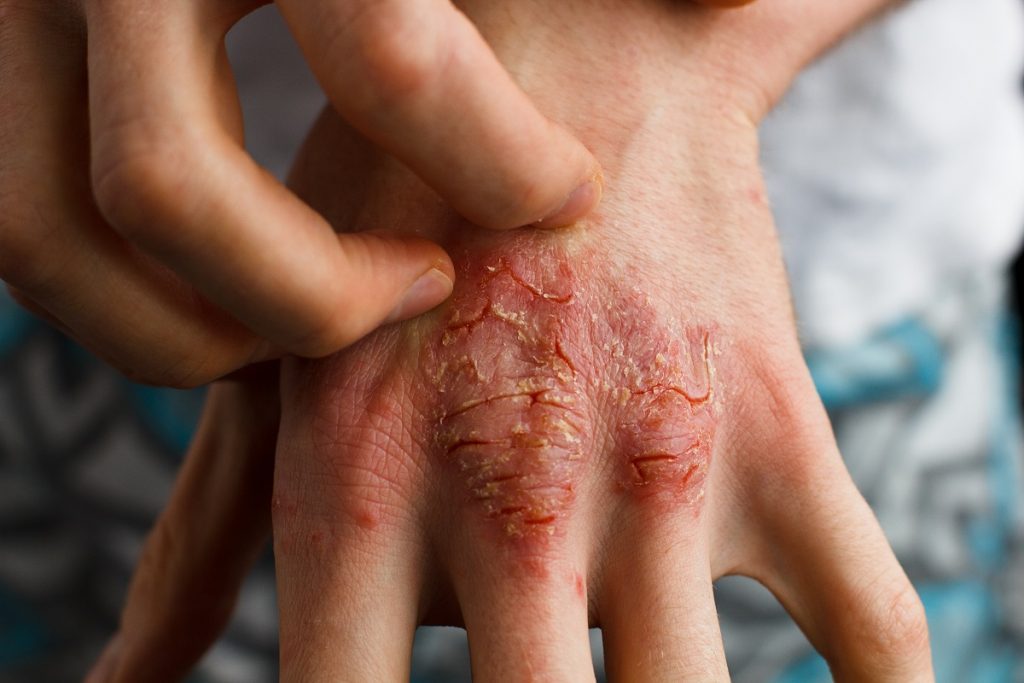The polymorphous light eruption is known as a sun allergy because it occurs when exposed to sunlight and its symptoms are similar to those of an allergic reaction. We explain its symptoms and treatment. Those who are having skin allergies consult a dermatologist.
The polymorphic light eruption (PLE), popularly known as sun allergy, consists of an abnormal reaction to light that causes skin lesions’ appearance after direct sunlight exposure. The name sun allergy is because the symptoms are similar to those of an allergic reaction. However, PLE is not truly an allergy.
Exposure to light can cause various skin diseases, known as photodermatoses, with PLE being the most common of them all. Knowing the exact prevalence of this disease is very difficult since although many people experience abnormal reactions to sunlight, the symptoms are usually mild and transient, so they do not consult their doctor most of the time.
The studies carried out an estimate that PLE’s prevalence is 10-20% in the European and North American populations. It is more common in women than in men, usually in a 2: 1 or 3: 1 ratio. It affects all races and skin types, although fair-skinned patients tend to be affected more often. PLE usually begins in the second and third decades of life, but there may also be symptoms during childhood or late adulthood.
Causes of sun allergy
The exact sun allergy cause for this skin reaction to sunlight is not yet known. However, it is known that PLE occurs when there is exposure to ultraviolet rays (UVA or UVB) for longer than usual. For this reason, this disease is more frequent at the beginning of spring and in summer, that is, the months of the year in which the sun’s rays are incredibly intense.
In addition, it is at this time when the skin spends more time exposed to sunlight (despite this, the lesions can persist throughout the year). Ultraviolet type C (UVC) radiation and visible light are also considered responsible for this disease.
The diagnosis is mainly clinical, so it is based on the medical history and physical examination. The existence of a triggering factor, such as drugs, chemicals (creams, perfumes), metabolic disorders (porphyrias), and deficiency diseases, must always be ruled out—also autoimmune diseases like lupus.
In the treatment of sun allergy, strict sun protection is essential, although drugs such as corticosteroids or antimalarials can be used in the most severe cases. PLS prognosis is highly variable, ranging from complete remission to the development of debilitating symptoms and possibly other autoimmune disorders.
Symptoms of sun allergy
The most common polymorphous light eruption (PLE) or sun allergy are itchings, pain, and redness of the skin. The lesions usually appear within a few hours to several days after sun exposure and are generally located on bare skin areas exposed to the sun.
These injuries can persist for several days and usually resolve without scarring. They occur in recurrent outbreaks that tend to be less and less intense and can disappear at the end of summer, although they reappear the following spring.
The form of the lesions caused by sun allergy is very varied, as indicated by the name of the disease itself (polymorphic eruption). However, each patient usually presents the same type of lesions. The most frequent is the appearance of:
- Papules: lesions less than one centimeter in size, raised, and well defined.
- Papulovesicles: similar to the previous ones and to which are added small blisters with liquid content inside.
- Plates: they are more extensive.
- Erythematous multiform lesions: that is, lesions reddened in many different ways
Areas most affected by sun allergy.
The body areas most frequently affected by sun allergy are the neck, décolleté, and forearms. Other regions such as the arms, back, or legs can also be affected.
Normally, the face and hands of patients with PLE do not show lesions because these areas generally receive daily sun exposure and, therefore, are habituated. This is because many individuals experience a skin tightening effect if exposure to the sun is prolonged, which causes these areas to be less affected by this disease.
Finally, remember that other manifestations associated with sun allergies such as headache, nausea, or chills may appear, but they are not frequent.

